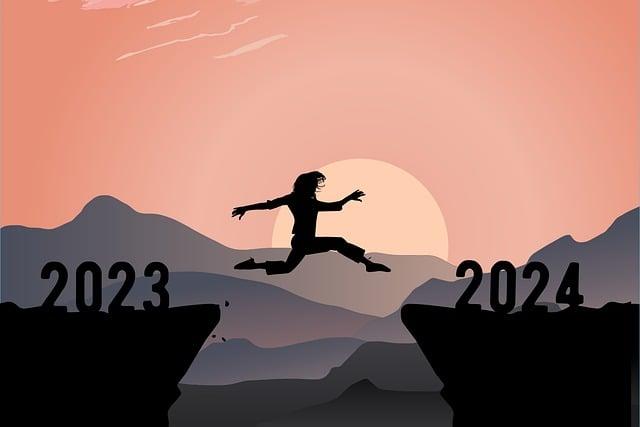Brazilian Jiu-Jitsu, more commonly known as BJJ, has gained significant popularity as a martial art and self-defense system. However, outside of the combat realm, BJJ has also acquired an alternative interpretation that delves into a realm generally left unspoken about: its sexual connotations. This article aims to explore the different interpretations of BJJ in a sexual context, providing a comprehensive understanding of this controversial topic. By shedding light on this lesser-known aspect, we hope to promote an informed and open conversation about the intersection of BJJ and sexuality.
1. Exploring the Origins and Context of BJJ’s Sexual Connotations
The origins of Brazilian Jiu-Jitsu’s (BJJ) sexual connotations can be traced back to its roots in Japanese martial arts, specifically Judo. During the late 19th century, Judo’s founder, Jigoro Kano, sought to create a system that emphasized leverage and technique over brute strength, making it accessible to practitioners of all sizes. However, as Judo spread to Brazil and evolved into BJJ, some practitioners began to incorporate provocative positions and movements into their training, giving rise to the sexual undertones that are now associated with certain aspects of the sport.
BJJ’s sexual connotations also find their context within the wider culture of martial arts, where thoughts of dominance and physicality are often intertwined with notions of sensuality and seduction. This complex interplay of power, control, and personal connection has lent itself to the development of certain techniques within BJJ that evoke a range of intimate experiences. From the sweeping motion of a guard pass to the intricate interlocking of limbs in a submission hold, these movements can be seen as mirroring the dynamics of physical intimacy, albeit in a controlled and consensual context.
As BJJ continues to evolve and grow in popularity, it is important to acknowledge and understand the historical and cultural factors that have contributed to its sexual connotations. While these sensual aspects may be offputting to some, they remain a unique and integral part of BJJ’s identity, highlighting the rich tapestry of influences that shape the world of martial arts. By examining the origins and context of BJJ’s sexual connotations, we gain a deeper appreciation for the complexities and nuances that make this martial art so fascinating and diverse.
2. Unraveling the Different Interpretations of BJJ with Sexual Undertones
When it comes to Brazilian Jiu-Jitsu (BJJ), which is widely considered a serious martial art, there exists a surprising divergence in interpretations that delve into sexual undertones. While it’s crucial to approach this topic with respect and sensitivity, exploring these various viewpoints can shed light on the complexities of the art and the diverse perspectives within the BJJ community.
1. The Metaphorical Approach: Some practitioners believe that certain BJJ techniques, such as submissions and grappling maneuvers, can be metaphorically linked to sexuality. For example, a submission hold might be seen as an intimate struggle for control and dominance between two individuals. This interpretation emphasizes the human connection, trust, and vulnerability that both BJJ and intimate relationships entail.
2. The Historical Context: Others argue that the perceived sexual undertones in BJJ stem from the art’s historical roots. As BJJ evolved from judo and various traditional Japanese martial arts, it’s said to have inherited some of their cultural characteristics. In Japan, physical contact in martial arts training was often seen as a way to cultivate trust, strengthen bonds, and develop respect among practitioners. While these interactions were non-sexual in nature, they are sometimes misconstrued when BJJ is transplanted into Western cultures.

3. Challenging Misconceptions: BJJ’s Role in Enhancing Intimacy and Communication
When it comes to enhancing intimacy and communication, Brazilian Jiu-Jitsu (BJJ) plays a surprisingly significant role. Contrary to common misconceptions, this martial art not only cultivates physical strength and self-defense skills but also fosters emotional bonds and effective communication techniques.
Firstly, practicing BJJ with a partner promotes trust and cooperation, which are crucial elements in any intimate relationship. Through constant physical contact and reliance on each other’s movements, practitioners develop a deeper level of trust and mutual dependence. This sense of trust transfers into other aspects of their relationship, enabling partners to feel more secure and open with each other. Moreover, BJJ teaches the fundamental importance of effective communication during training sessions. Since precise and clear communication is vital to execute joint locks and submissions, individuals learn to verbalize their intentions, listen attentively, and respond accordingly. These skills easily extend beyond the mat and positively influence how couples communicate in their everyday lives.

4. Navigating Consent and Boundaries in BJJ: Establishing Healthy Interactions
When practicing Brazilian Jiu-Jitsu (BJJ), it is crucial to prioritize consent and establish clear boundaries to foster a safe and respectful training environment. These principles ensure that all participants feel comfortable and empowered throughout their journey. By following these guidelines, you can navigate the intricacies of personal interaction in BJJ with confidence and build strong, mutual trust among training partners.
Here are some essential tips to consider:
- Communicate openly: Effective communication lies at the core of establishing healthy interactions. Before engaging in any techniques or drills, ensure that both you and your training partner are on the same page. Discuss comfort levels, preferences, and any potential limitations to avoid misunderstandings.
- Seek and respect consent: Consent is fundamental in maintaining a safe training environment. Always ask for permission before initiating physical contact, whether it’s during rolling, partner drills, or practicing submissions. Remember, consent should be ongoing and can be withdrawn at any time.
- Respect personal boundaries: Every individual has different physical boundaries, and it is essential to be mindful of them. Always be aware of personal space, avoid unnecessary contact outside the practice, and ensure that your actions align with your training partner’s comfort level. Respecting boundaries fosters trust and creates a conducive atmosphere for growth and learning.

5. Empowering Women in BJJ: Breaking Stereotypes and Promoting Gender Equality
Women’s participation in Brazilian Jiu-Jitsu (BJJ) has been steadily increasing, challenging long-standing stereotypes and breaking barriers in the martial arts community. This rise in female empowerment within BJJ is fostering a supportive environment that promotes gender equality and encourages women to excel in a traditionally male-dominated sport.
So, what makes BJJ an empowering platform for women? Firstly, BJJ cultivates strength, resilience, and self-confidence, empowering women to overcome physical and mental obstacles both on and off the mats. Through the practice of BJJ techniques, women gain a sense of empowerment as they learn to leverage their body weight and technique, rather than relying solely on brute strength. This provides women with a valuable set of self-defense skills, boosting their self-esteem and enabling them to navigate the world with increased confidence.
- BJJ creates a safe and inclusive space: Women’s-only BJJ classes and dedicated training programs have emerged, fostering a supportive environment where women can embrace their journey in a male-dominated sport without feeling intimidated. These spaces encourage collaboration, mentorship, and camaraderie among women practitioners, breaking the isolation that females may sometimes experience in other areas of life.
- Challenging stereotypes: By actively participating in BJJ, women defy long-standing stereotypes that associate martial arts with masculinity. Breaking down these barriers not only empowers women but also inspires future generations of girls to pursue their passions fearlessly.
- Fostering personal growth: BJJ is as much a mental game as it is physical. Women who engage in this sport develop discipline, patience, and problem-solving skills, enhancing their personal growth and preparing them to face challenges head-on.
- Role models and representation: As more women excel in BJJ, they become role models, inspiring others and offering proof that gender does not limit one’s potential. Their achievements demonstrate that hard work, dedication, and passion are what truly matter on the road to success.
In conclusion, the rise of women in BJJ is breaking stereotypes and promoting gender equality by creating a space for empowerment, personal growth, and inspiration. By participating in this martial art, women are challenging societal norms and paving the way for a more inclusive and equal future in the world of sports.

6. Building a Supportive and Inclusive BJJ Community: Fostering Respect and Understanding
Creating a supportive and inclusive Brazilian Jiu-Jitsu (BJJ) community is crucial for fostering respect and understanding among practitioners. By nurturing an environment where everyone feels accepted and valued, we can enhance the collective experience and growth of our BJJ community. Here are some ways to promote inclusivity and develop a welcoming atmosphere:
- Embrace diversity: Celebrate the different backgrounds, cultures, and abilities within our BJJ community. Encourage practitioners to share their unique experiences and perspectives.
- Practice open communication: Establish clear channels for dialogue and ensure that everyone’s voice is heard and respected. Encourage practitioners to express their thoughts, concerns, and opinions openly.
- Offer support and guidance: Create mentorship programs or buddy systems to pair experienced practitioners with newer members. This way, a strong support system can be built, fostering growth and motivation for everyone.
- Promote gender equality: Encourage female participation in BJJ by organizing women-only classes or workshops. Champion gender equality and ensure that the training environment is safe and inclusive for all genders.
Building a supportive and inclusive BJJ community is an ongoing process that requires collective effort from practitioners, instructors, and leaders. By fostering an environment built on respect and understanding, we can create a space where everyone can thrive and reach their full potential. Remember, a diverse and inclusive community is not just beneficial for individuals but also for the growth and development of BJJ as a whole.

7. Encouraging Open Discourse: Promoting Education and Awareness Around BJJ’s Sexual Interpretations
Open discourse plays a crucial role in fostering a safe and inclusive environment within the BJJ community. By promoting education and awareness around BJJ’s sexual interpretations, we aim to encourage respectful discussions and empower individuals to navigate this nuanced aspect of the sport. Here are some ways we can contribute to open discourse:
- Organize workshops and seminars: Hosting informative sessions led by experts can help clarify misconceptions, answer questions, and facilitate open dialogue about BJJ’s sexual interpretations. These workshops provide a learning platform for practitioners to gain insights and develop a deeper understanding.
- Create educational resources: Developing comprehensive resources such as articles, guides, and videos can help disseminate accurate information about BJJ’s sexual interpretations. These resources can serve as a reference for both beginners and experienced practitioners, promoting awareness, empathy, and a respectful approach towards this topic.
- Encourage respectful conversations: Emphasizing the importance of respectful discussions within the BJJ community can foster an environment where individuals feel comfortable expressing their opinions and experiences. By setting guidelines for communication and actively moderating online spaces, we can ensure that dialogue remains constructive and inclusive.
To promote open discourse, it is crucial to engage in ongoing self-reflection and evaluation. This involves continuously challenging our own biases and beliefs, while also being proactive in seeking different perspectives. Additionally, leveraging the power of social media platforms can help reach a wider audience and initiate conversations. By sharing insightful content, encouraging questions, and amplifying diverse voices, we can contribute to a more educated and understanding BJJ community.
As we strive for open discourse, let’s remember that supporting education and awareness around BJJ’s sexual interpretations is an ongoing process that requires continuous learning, listening, and respect for all individuals. By creating a safe space for discussions, we can ensure that everyone feels valued and included, promoting a true sense of unity within the BJJ community.
Frequently Asked Questions
Q: What does “BJJ” mean in a sexual context?
A: In a sexual context, “BJJ” refers to “blowjob jiu-jitsu,” a term sometimes used to describe a playful or strategic approach to oral sex.
Q: Where does the term “BJJ” come from in this context?
A: The term ”BJJ” likely originated from the combination of “blowjob,” an act of oral sex, and “jiu-jitsu,” a Japanese martial art that emphasizes technique, leverage, and strategy.
Q: How is “BJJ” interpreted in a sexual context?
A: The term “BJJ” in a sexual context is often used to describe an approach to oral sex that incorporates various techniques, creativity, and skillfulness to provide pleasure for both partners.
Q: Is “BJJ” limited to a specific gender or sexual orientation?
A: No, “BJJ” is not limited to any specific gender or sexual orientation. It can be enjoyed and practiced by individuals of any gender identity or sexual orientation.
Q: Does “BJJ” involve any specific techniques or strategies?
A: While specific techniques can vary between individuals, “BJJ” generally refers to a mindset of being attentive to one’s partner’s desires, using various methods, such as different hand or tongue movements, to enhance pleasure.
Q: Why do people use the term “BJJ” instead of simply saying “oral sex”?
A: Using the term “BJJ” adds a playful and lighthearted tone to the act of oral sex, allowing partners to discuss and explore this topic in a more candid and comfortable manner.
Q: Is “BJJ” a widely recognized term in the mainstream?
A: The term “BJJ” as a sexual reference may not be widely recognized in mainstream conversations or media, but it is used within certain communities or online forums where discussions surrounding sexual experiences are present.
Q: Are there any potential misconceptions related to the term “BJJ”?
A: Misunderstandings may arise if individuals unfamiliar with the term mistakenly associate it with Brazilian Jiu-Jitsu, the martial art. However, in a sexual context, “BJJ” solely pertains to oral sex techniques, not martial arts.
Q: How can partners explore mutual consent while incorporating ”BJJ” in their sexual experiences?
A: Open communication, consent, and active participation are essential in any sexual encounter. Partners should have honest conversations, establish boundaries, and continuously check in with one another to ensure mutual comfort and enjoyment.
Q: Should individuals engage in “BJJ” if they are uncomfortable or unwilling?
A: No one should engage in any sexual activity, including “BJJ,” if they are uncomfortable, unwilling, or do not consent. It is crucial to prioritize consent, respect personal boundaries, and only engage in acts that both partners are fully comfortable with. In conclusion, it is essential to understand the various interpretations of BJJ meaning sexually. While some may associate it with power dynamics, it is crucial to prioritize consent and open communication in any physical relationship.

